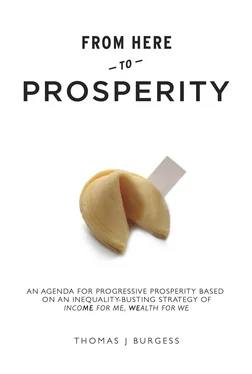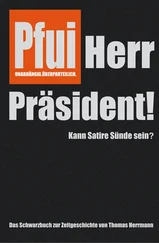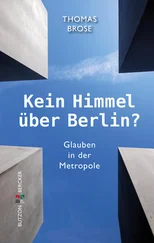PART I
The Challenge for Change
‘I have a dream that one day this nation will rise up, live out the true meaning of its creed: We hold these truths to be self evident, that all men are created equal’
Martin Luther King1963
THE TIME has come, to join together, realise that many more people could lead fulfilled and purposeful lives if we took a different approach to our society, our economy and our government.
We let many in the world be hungry when there is plenty.
We live in democracies but power is in the hands of a few.
We are still consuming finite resources when there are sustainable options.
We are killing our planet but we have nowhere else to go.
We are imposing taxes on people so they cannot build a fulfilled life.
We allow the rich to get richer and the poor to get poorer.
We agree with human rights but do not respect the rights of many humans.
We are still fighting wars in the name of peace.
We can do better.
It is time to put aside the divisions of the past, to move away from right or left wing rhetoric that can alienate and no longer unites. There are many good people with good ideas and intentions, we need to be open, listen, learn and work it out. We have a huge task ahead. Let’s work together and make that choice.
Government itself is not the problem: in fact, it is the answer. This does not mean bigger governments but better and bolder governments, with a purpose and vision. This is an Agenda for peaceful but determined action to make the world a better place for many more people.
It is not difficult, it is not simple, but it can be done.
A pivotal point has been reached and unless we act, things could get out of control. What is happening now is not new, it has happened before; we need to learn from our mistakes. We live in an even more highly connected world with rapid communication and instant access to information; we should be wiser and more informed.
Let’s seize the opportunity, take up the challenge for change so that real progress can be made.
CHAPTER 1
Where Are We Now?
WE ARE NOT where we could be on the path of human progress. Despite all the advances that have been made in technology, healthcare and communications, we still live in a world riddled with inequality, conflict and suffering. Even in the rich nations, we need change and I believe that if we can make it here, to paraphrase the song, we can make it anywhere. At base, almost all our problems stem from inequality of some sort: of wealth, of opportunity, of resources or freedoms. There is no excuse for poverty in the economically advanced countries, no reason why it should persist; there is enough income generated and wealth created to go round in a more equitable manner.
I want to give you some real facts that bring clarity about where we are today and facts that are indisputable. Then to move on to common sense policy ideas that, given the political will, could make a real difference. But that is not enough, the greatest ideas are no good unless implemented, so I want to outline how the environment for change can be created, once we have that, how the policy ideas can be implemented in a realistic time frame. Before the answers, let’s review the problems to determine where we are now. I have identified three major issues; while I have taken most of my illustrations from the UK and USA, these problems are applicable to most western democracies and ‘advanced’ economies.
Extreme inequality and persistent poverty
Slow economic progress
Damaged democracy, a government that isn’t working, for us
1.1 Extreme inequality and persistent poverty
The world is getting richer and yet most of its inhabitants are poor or getting poorer. How can this be? Surely, everyone should be getting richer, perhaps not at the same rate and certainly not from the same base, but getting richer, regardless? Well, no. It doesn’t work like that, unfortunately, because our economic and political systems drive wealth towards the rich, concentrating more and more of it into a very few hands, and with it, political power. The Equality Trust, which works to improve the quality of life in the UK, says:
the grotesque concentration of wealth in the hands of a tiny minority is fracturing our society, weakening our economy and giving disproportionate power to the richest. Unless policymakers adopt a clear goal of reducing the gap between the richest and the rest, they will have to govern an increasingly dysfunctional nation.
Some people are very rich, so rich, in fact, that 80 super-rich individuals are as wealthy as all the poorest 3.5 billion combined: half the population of the world. Wealth is so concentrated among the super-rich and so thinly spread among the very poor that when you reverse the equation to see how many people at the top have, say, half the world’s wealth it is still only 1%, according to the charity Oxfam. Nor do the 99% share the other half of the world’s wealth equally. The gradient is so steep that with wealth amounting to $110 trillion, that richest 1% owns 65 times the total wealth of the bottom half of the world’s population. And this tiny group’s wealth is not just growing but accelerating. The richest 1% increased their share of income in 24 out of 26 countries for which data is available between 1980 and 2012.
According to the Global Wealth Report by Credit Suisse (published in October 2014), global wealth surged by $20.1 trillion over the previous year to $263 trillion, 20% above the pre-crisis peak in 2007. The countries with the biggest economies benefitted most. Their exact position on the podium varies according to who is doing the measuring – the CIA Handbook, the International Monetary Fund, The United Nations or the World Bank – but the European Union, the USA and China are first, second and third in terms of Gross Domestic Product. In the USA, household wealth rose by $8.9 trillion in the 12 months ending mid-2014. Despite the crisis in the Euro Zone, the European Union enjoyed the second-largest rise of $8.1 trillion. China, with 21.4% of the adult population of the world, added 8.1% of global wealth or $715 billion. The drop-off at that point is sharp.
The World Wealth Report published by Capgemini estimates that in 2014 there were 12 million millionaires (High Net Worth Individuals, HNWI) in the world, each having a net worth of at least $1 million in all assets except their primary residence. Their assets are expected to rise to $55.8 trillion by 2015. The number of multi-millionaires worldwide has grown by 7.1% over the past decade, while millionaire numbers have increased by 58%.
In the USA, the Congressional Budget Office found that the gap in income between the top 1% of the population and the rest tripled between 1979 and 2007, the onset of the Great Recession. After federal taxes and transfer payments, the income of the top 1% increased by 275%, while it increased less than 40% for the middle three quintiles of the population and only 18% for the bottom quintile. In April 2013, Pew Research Center in USA reported that from 2009 to 2011, the mean net worth of households in the upper 7% of wealth distribution rose by an estimated 28%, while the mean net worth of households in the lower 93% dropped by 4%. While a few got much richer, almost all Americans were worse off.
The wealth gap has continued to widen in the recovery; an estimated 15% – that’s more than 45 million people – live in poverty in the USA. According to the US Census Bureau, median family and median household incomes have been falling, adjusted for inflation; while according to the data gathered by Emmanuel Saez, at the University of California, Berkley, the income of the wealthiest 1% has risen by 3.1%. Saez has calculated that 95% of all economic gains since the recovery started have gone to the 1%.
Читать дальше












